The Quantum Ratio
Abstract
1. Introduction: The Quantum Ratio
1.1. The Size of the Body
1.2. Quantum Range
1.3. The Microscopic Degrees of Freedom Inside of a Macroscopic Body Are Quantum Mechanical
2. The Quantum Ratio Illustrated
2.1. Elementary Particles
2.2. Hadrons and Atomic Nuclei
2.3. Stern–Gerlach Experiment
2.4. Atomic and Molecular Interferometry
On the “Matter Wave”
3. Decoherence versus Classicality
3.1. Stern–Gerlach Setup, Decoherence, and Classical Limit
3.1.1. Pure QM State
3.1.2. Environment-Induced Decoherence
3.1.3. Classical (or Quantum?) Particle
3.2. Tunneling Molecules
4. The Abstract Concept of a “Particle of Mass ”
5. Discussion
- (i)
- for macroscopic motions (i.e., ), the Heisenberg relation does not limit the simultaneous determination (i.e., the initial condition) for the position and momentum
- (ii)
- there is a lack of quantum diffusion due to large mass (i.e., a large number of atoms and molecules composing the body)
- (iii)
- there is a finite body temperature, implying thermal decoherence and the mixed-state nature of the body
Author Contributions
Funding
Acknowledgments
Conflicts of Interest
Appendix A. Variational Solution for SG Wavepackets
References
- Konishi, K. Newton’s equations from quantum mechanics for a macroscopic body in the vacuum. Int. Journ. Mod. Phys. A 2023, 38, 2350080. [Google Scholar] [CrossRef]
- Weinberg, S. A model of Leptons. Phys. Rev. Lett. 1967, 19, 1264. [Google Scholar] [CrossRef]
- Salam, A. Weak and electromagnetic interactions. In Elementary Particle Theory; Svartholm, N., Ed.; Almqvist Forlag AB: Stockholm, Sweden, 1968; p. 367. [Google Scholar]
- Glashow, S.L.; Iliopoulos, J.; Maiani, L. Weak Interactions with Lepton-Hadron Symmetry. Phys. Rev. D 1970, 2, 1285. [Google Scholar] [CrossRef]
- Fritzsch, H.; Gell-Mann, M.; Leutwyler, H. Advantages of the color octet gluon picture. Phys. Lett. 1973, 47, 365. [Google Scholar] [CrossRef]
- Wilson, K.G. The Renormalization Group and Critical Phenomena. Rev. Mod. Phys. 1983, 55, 583. [Google Scholar] [CrossRef]
- Konishi, K. Quantum fluctuations, particles and entanglement: A discussion towards the solution of the quantum measurement problems. Int. J. Mod. Phys. A 2022, 37, 2250113. [Google Scholar] [CrossRef]
- Jackiw, R. Delta-Function Potentials in Two- and Three-Dimensional Quantum Mechanics; Bég Memorial Volume; Ali, A., Hoodbhoy, P., Eds.; World Scientific: Singapore, 1991. [Google Scholar]
- Joos, E.; Zeh, H.D. The emergence of classical properties through interaction with the environment. Z. Phys. B 1985, 59, 223–243. [Google Scholar] [CrossRef]
- Zurek, W.H. Decoherence and the Transition from Quantum to Classical. Phys. Today 1991, 44, 36. [Google Scholar] [CrossRef]
- Tegmark, M. Apparent wave function collapse caused by scattering. Found. Phys. Lett. 1993, 6, 571. [Google Scholar] [CrossRef]
- Tegmark, M. Importance of quantum decoherence in brain processes. Phys. Rev. E 2000, 61, 4194. [Google Scholar] [CrossRef]
- Joos, E.; Zeh, H.D.; Kiefer, C.; Giulini, D.; Kupsch, J.; Stamatescu, I.O. Decoherence and the Appearance of a Classical World in Quantum Theory; Springer: Berlin/Heidelberg, Germany, 2002. [Google Scholar]
- Zurek, W.H. Decoherence, einselection, and the quantum origins of the classical. Rev. Mod. Phys. 2003, 75, 715–775. [Google Scholar] [CrossRef]
- Leggett, A.J. Macroscopic Quantum Systems and the Quantum Theory of Measurement. Suppl. Prog. Theor. Phys. 1980, 69, 80. [Google Scholar] [CrossRef]
- Courty, J.-M.; Heidmann, A.; Pinard, M. Quantum limits of cold damping with optomechanical coupling. Eur. Phys. J. D 2001, 17, 399–408. [Google Scholar] [CrossRef]
- Armour, A.D.; Blencowe, M.P.; Schwab, K.C. Entanglement and decoherence of a Micromechanical Resonator via Coupling to a Cooper-Pair Box. Phys. Rev. Lett. 2002, 88, 148301. [Google Scholar] [CrossRef]
- Knobel, R.G.; Cleland, A.N. Nanometer-scale displacement sensing using a single electron transistor. Nature 2003, 424, 17. [Google Scholar] [CrossRef] [PubMed]
- LaHaye, M.D.; Buu, O.; Camarota, B.; Schwab, K.C. Approaching the Quantum Limit of a Nanomechanical Resonator. Science 2004, 304, 74–77. [Google Scholar] [CrossRef] [PubMed]
- Cleland, A.N.; Geller, M.R. Superconducting Qubit Storage and Entanglement with Nanomechanical Resonators. Phys. Rev. Lett. 2004, 93, 070501. [Google Scholar] [CrossRef]
- Martin, I.; Shnirman, A.; Tian, L.; Zoller, P. Ground-state cooling of mechanical resonators. Phys. Rev. B 2004, 69, 125339. [Google Scholar] [CrossRef]
- Kleckner, D.; Bouwmeester, D. Sub-kelvin optical cooling of a micromechanical resonator. Nature 2006, 444, 2. [Google Scholar] [CrossRef]
- Regal, C.A.; Teufel, J.D.; Lehnert, K.W. Measuring Nanomechanical Motion with a Microwave Cavity Interferometer; Macmillan Publishers Limited: New York, NY, USA, 2008. [Google Scholar] [CrossRef]
- Schliesser, A.; Rivière, R.; Anetsberger, G.; Arcizetandt, O.; Kippenberg, J. Resolved-Sideband Cooling of a Micromechanical Oscillator; Macmillan Publishers Limited: New York, NY, USA, 2008. [Google Scholar] [CrossRef]
- Abbott, B.; Abbott, R.; Adhikari, R.; Ajith, P.; Allen, B.; Allen, G.; Amin, R.; Anderson, S.B.; Hanna, C.; LIGO Scientific; et al. Observation of a kilogram-scale oscillator near its quantum ground state. New J. Phys. 2009, 11, 073032. [Google Scholar] [CrossRef]
- O’Connell, A.D.; Hofheinz, M.; Ansmann, M.; Bialczak, R.C.; Lenander, M.; Lucero, E.; Neeley, M.; Sank, D.; Wang, H.; Cleland, A.N.; et al. Quantum ground state and single-photon control of a mechanical resonator. Nature 2010, 464, 697. [Google Scholar] [CrossRef] [PubMed]
- Kim, Y.; Bertagna, F.; D’souza, E.M.; Heyes, D.J.; Johannissen, L.O.; Nery, E.T.; Pantelias, A.; Sanchez-Pedreno Jimenez, A.; Slocombe, L.; McFadden, J.; et al. Quantum Biology: An Update and Perspective. Quantum Rep. 2021, 3, 80–126. [Google Scholar] [CrossRef]
- Pietra, G.D.; Vedral, V.; Marletto, C. Temporal witnesses of non-classicality in a macroscopic biological system. arXiv 2023, arXiv:2306.12799v1. [Google Scholar]
- Particle Data Group; Workman, R.L.; Burkert, V.D.; Crede, V.; Klempt, E.; Thoma, U.; Tiator, L.; Agashe, K.; Aielli, G.; Allanach, B.C. Review of Particle Physics. Prog. Theor. Exp. Phys. 2022, 2022, 083C01. 2023 update. [Google Scholar]
- Hooft, G.’T. Why Do We Need Local Gauge Invariance in Theories With Vector Particles? An Introduction. NATO Sci. Ser. B 1980, 59, 101–115. [Google Scholar]
- Coleman, S. Dilatations (1971). In Aspect of Symmetry—Selected Erice Lectures; Cambridge University Press: Cambridge, UK, 1985. [Google Scholar]
- Gerlach, W.; Stern, O. Der experimentelle Nachweis der Richtungsquantelung im Magnetfeld. Z. Phys. 1922, 9, 349. [Google Scholar] [CrossRef]
- Keith, D.W.; Ekstrom, C.R.; Turchette, Q.A.; Prichard, D.E. An interferometer for Atoms. Phys. Rev. Lett. 1991, 66, 2693. [Google Scholar] [CrossRef]
- Brand, C.; Troyer, S.; Knobloch, C.; Cheshinovsky, O.; Arndt, M.A. Single, double and triple-slit diffraction of molecular matter waves. arXiv 2021, arXiv:2108.06565v2. [Google Scholar] [CrossRef]
- Arndt, M.; Nairz, O.; Vos-Andreae, J.; Keller, C.; Zouw, G.v.; Zeilinger, A. Wave-particle duality of C60 molecules. Nature 1999, 401, 680. [Google Scholar] [CrossRef]
- Brezger, B.; Arndt, M.; Zeilinger, A. Concepts for near-field interferometers with large molecules. J. Opt. B Quant. Semiclass. Opt. 2003, 5, S82–S89. [Google Scholar] [CrossRef]
- Brezger, B.; Hackermüller, L.; Uttenthaler, S.; Petschinka, J.; Arndt, M.; Zeilinger, A. Matter-Wave Interferometer for Large Molecules. Phys. Rev. Lett. 2002, 88, 100404. [Google Scholar] [CrossRef]
- Hackermüller, L.; Hornberger, K.; Brezger, B.; Zeilinger, A.; Arndt, M. Decoherence of matter waves by thermal emission of radiation. Nature 2004, 427, 711. [Google Scholar] [CrossRef]
- Chapman, M.S.; Ekstrom, C.R.; Hammond, T.D.; Schmiedmayer, J.; Tannian, B.E.; Wehinger, S.; Pritchard, D.E. Near-field imaging of atom diffraction gratings: The atomic Talbot effect. Phys. Rev. A 1995, 51, R14–R17. [Google Scholar] [CrossRef]
- Nowak, S.; Kurtsiefer, C.; Pfau, T.; David, C. High-order Talbot fringes for atomic matter waves. Opt. Lett. 1997, 22, 1430. [Google Scholar] [CrossRef]
- Clauser, J.F.; Li, S. Talbot-vonLau atom interferometry with cold slow potassium. Phys. Rev. A 1994, 49, R2213. [Google Scholar] [CrossRef]
- Bateman, J.; Nimmrichter, S.; Hornberger, K.; Ulbricht, H. Near-field interferometry of a free-falling nanoparticle from a point-like source. Nat. Commun. 2014, 5, 4788. [Google Scholar] [CrossRef]
- Talbot, H.F. LXXVI. Facts relating to optical science. No. IV. Lond. Edinb. Dublin Philos. Mag. J. Sci. 1836, 9, 401–407. [Google Scholar] [CrossRef]
- Tonomura, A.; Endo, J.; Matsuda, T.; Kawasaki, T.; Ezawa, H. Dimonstration of single-electron buildup of interference pattern. Am. J. Phys. 1989, 57, 117. [Google Scholar] [CrossRef]
- Hansen, K.; Campbell, E.E.B. Thermal radiation from small particles. Phys. Rev. E 1998, 58, 5477. [Google Scholar] [CrossRef]
- Konishi, K. Quantum fluctuations, particles and entanglement: Solving the quantum measurement problems. J. Phys. Conf. Ser. 2023, 2533, 012009. [Google Scholar] [CrossRef]
- Renninger, M. Messungen ohne Störung des Meßobjekts. Z. Phys. 1960, 158, 417. [Google Scholar] [CrossRef]
- Elitzur, A.C.; Vaidman, L. Quantum mechanical interaction-free measurements. Found. Phys. 1993, 23, 987. [Google Scholar] [CrossRef]
- Konishi, K. On the negative-result experiments in quantum mechanics. arXiv 2023, arXiv:2310.01955. [Google Scholar]
- Jackiw, R.; Kerman, A. Time-dependent variational principle and the effective action. Phys. Lett. 1979, 71A, 158. [Google Scholar] [CrossRef]
- Blum, T.; Elze, H.T. Semiquantum Chaos in the Double-Well. Phys. Rev. 1996, E 53, 3123. [Google Scholar] [CrossRef]
- Elze, H.T. Quantum Decoherence, Entropy and Thermalization in Strong Interactions at High Energy. Nucl. Phys. 1995, B 436, 213. [Google Scholar] [CrossRef][Green Version]
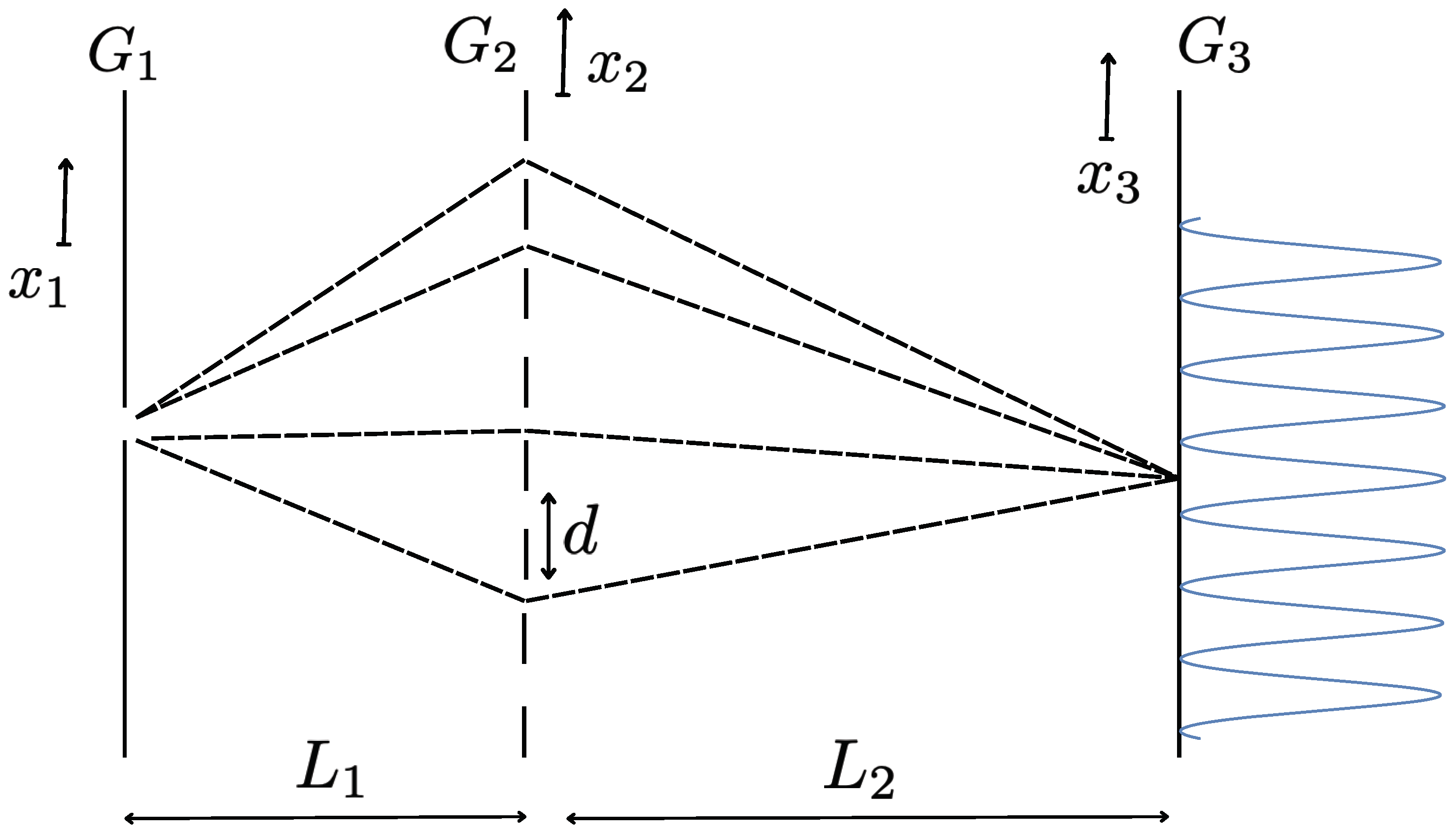
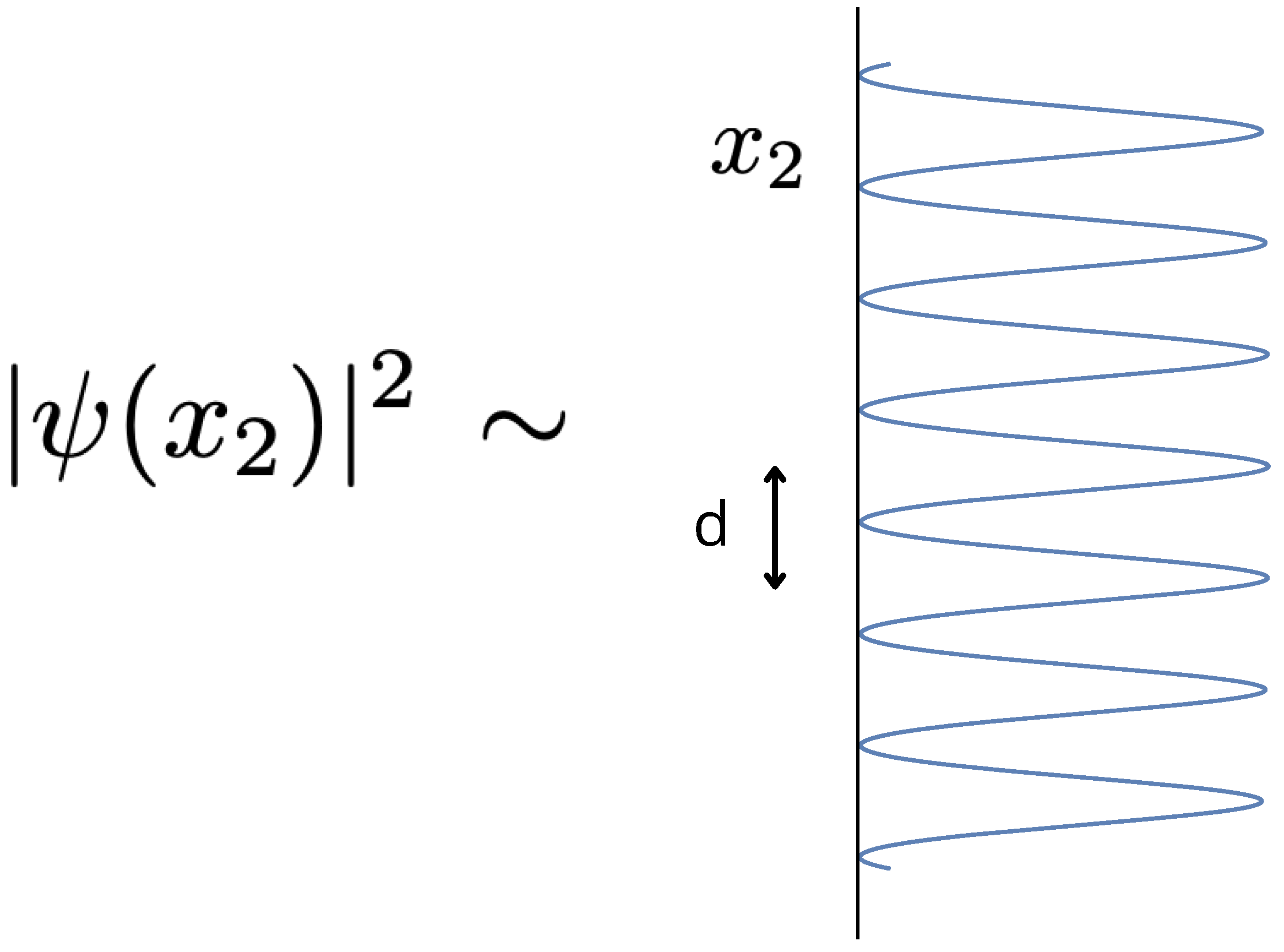
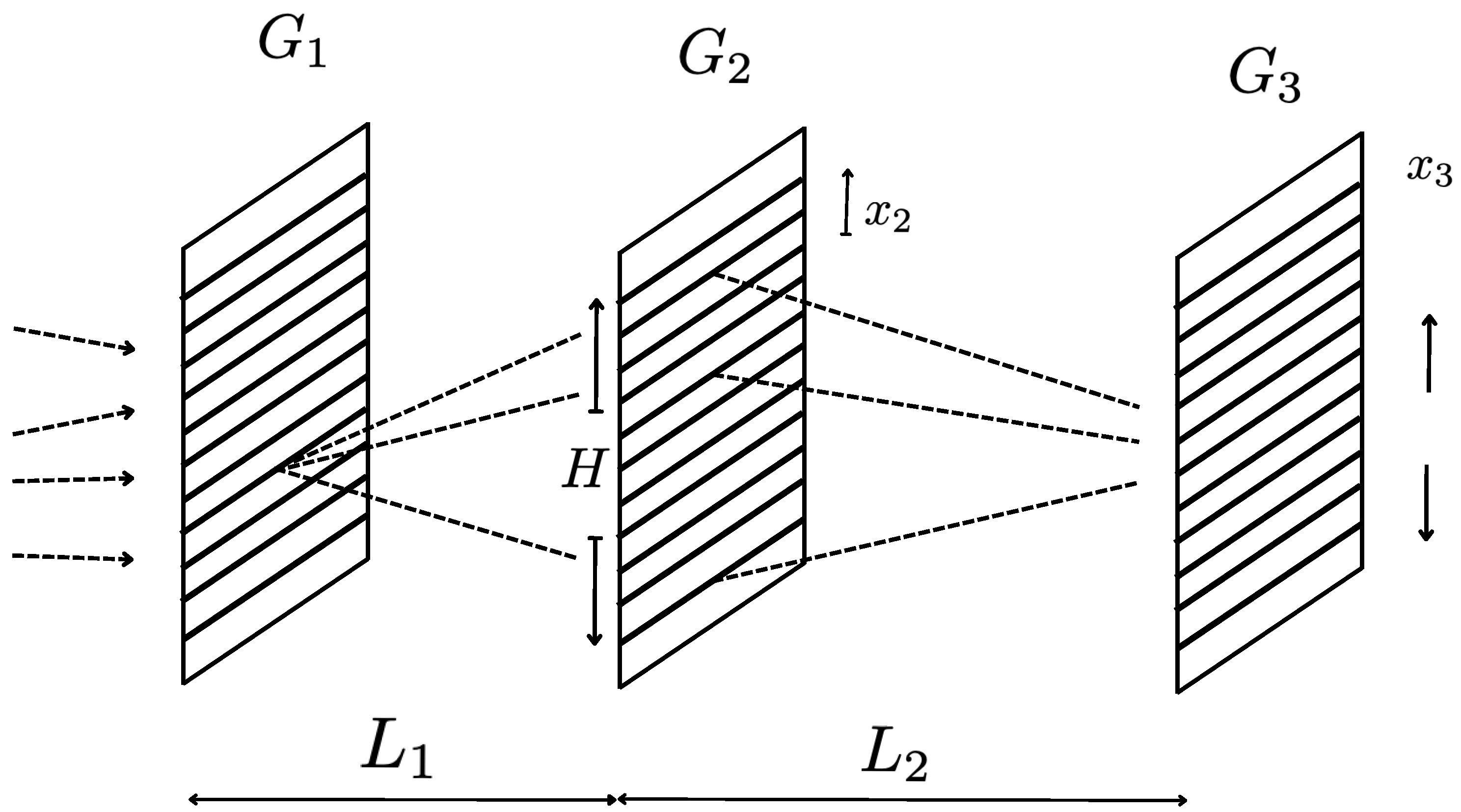
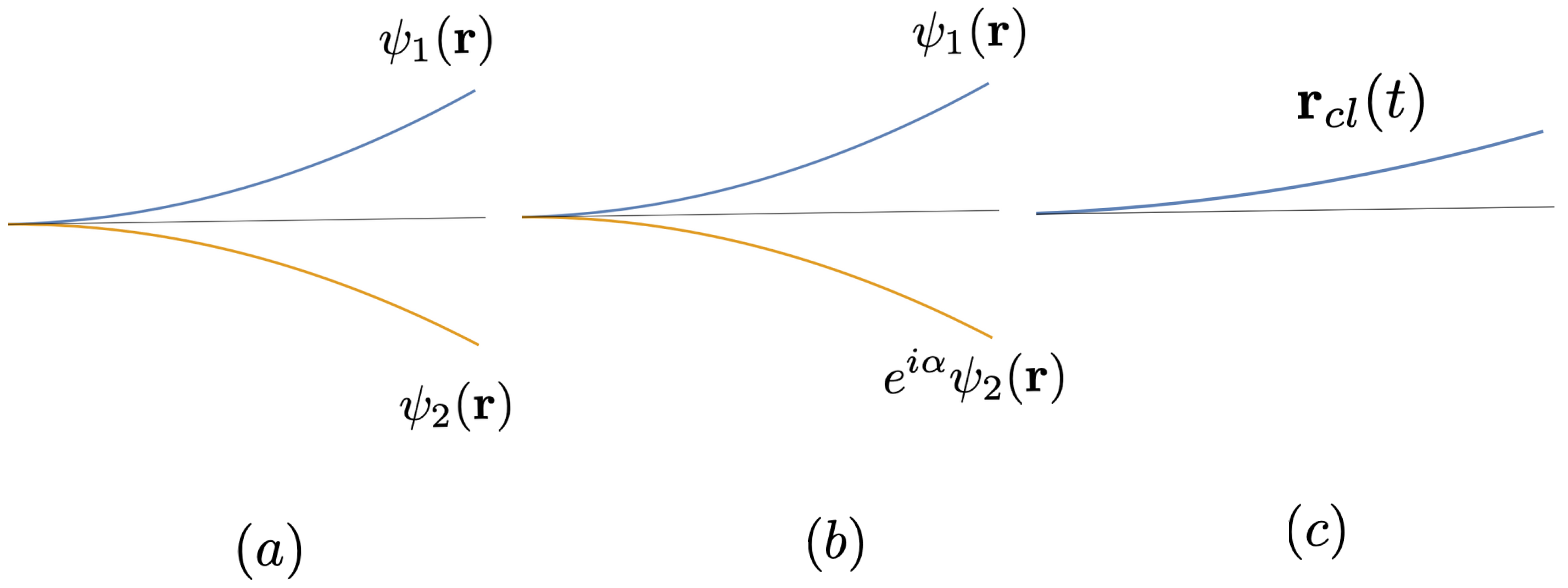

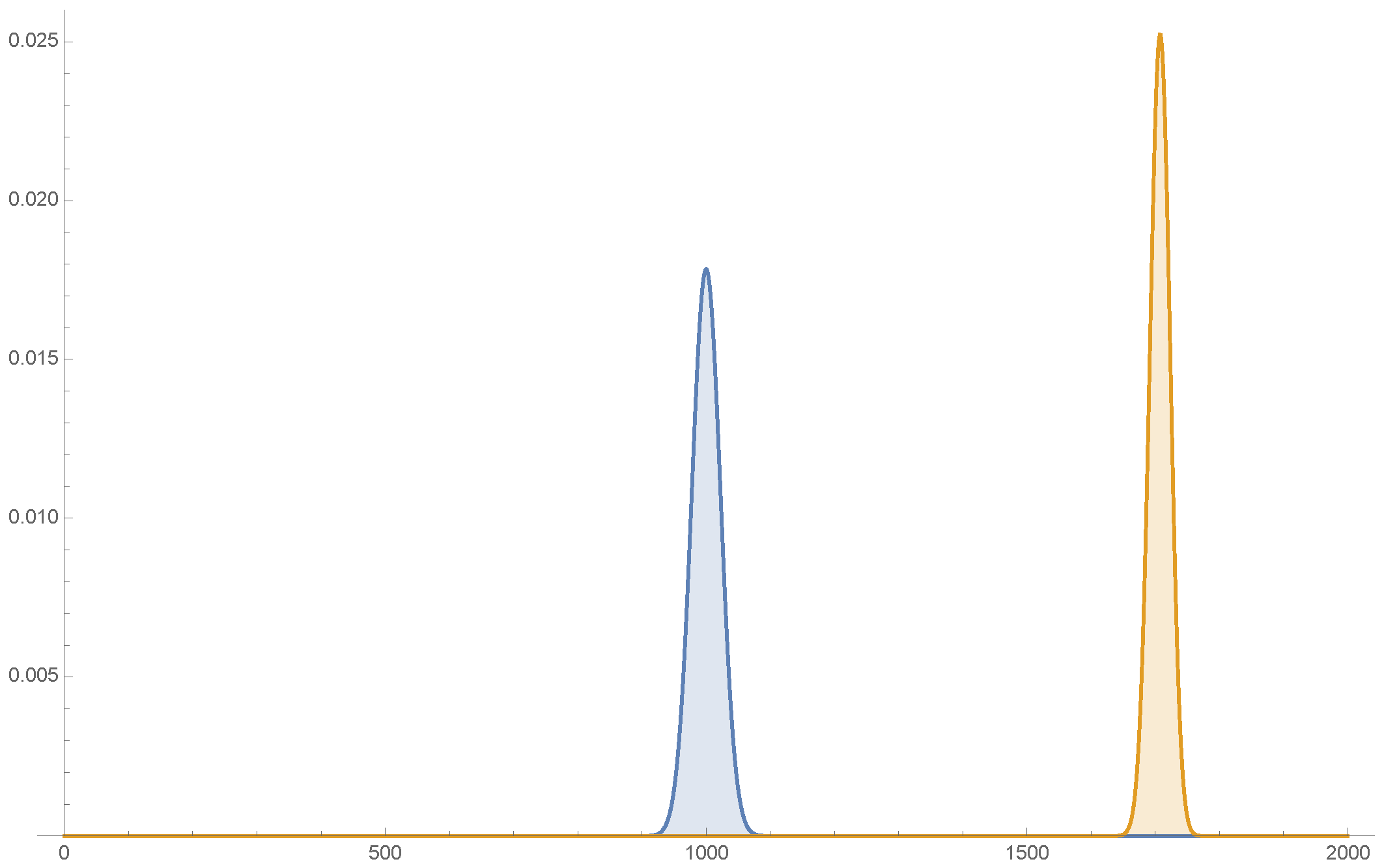

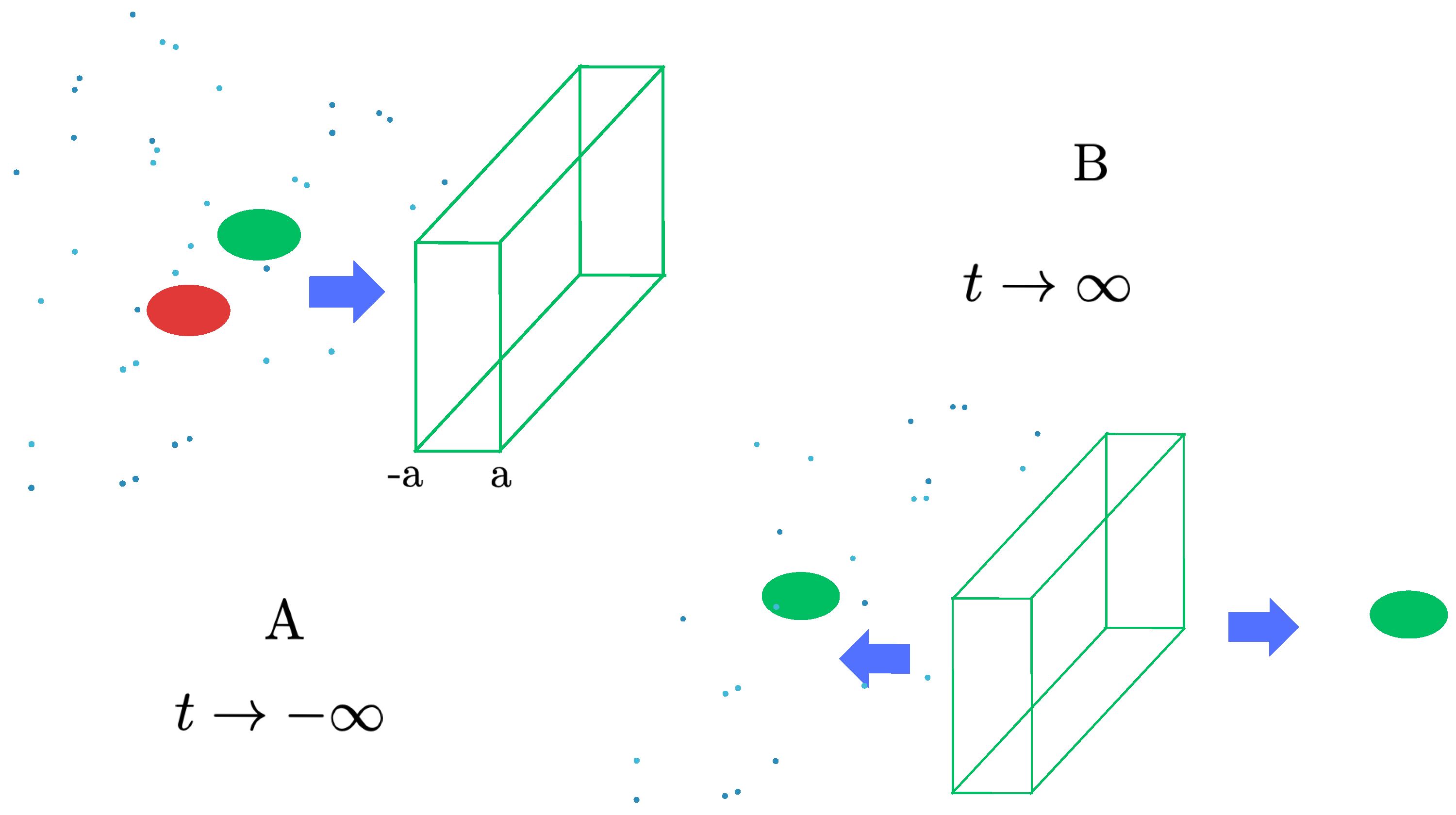
| Particle | Mass (in g) | Diffusion Time (in s) |
|---|---|---|
| electron | ||
| hydrogen atom | ||
| fullerene | ||
| a stone of 1 g | 1 |
| (u) | (d) | (s) | (c) | (b) | (t) |
| (e) | () | () | ; eV |
| photon | gluons | (GeV) | Z (GeV) |
| 0 | 0 |
| Particle | Mass | Q | Exp | Miscl | ||
|---|---|---|---|---|---|---|
| 108 | ∼ | [32] | Stern-Gerlach | |||
| 23 | ∼ | [39] | ||||
| 840 | 16 | ∼ | [36,37,38] | K | ||
| 840 | ∼ | ∼ | [38] | K |
Disclaimer/Publisher’s Note: The statements, opinions and data contained in all publications are solely those of the individual author(s) and contributor(s) and not of MDPI and/or the editor(s). MDPI and/or the editor(s) disclaim responsibility for any injury to people or property resulting from any ideas, methods, instructions or products referred to in the content. |
© 2024 by the authors. Licensee MDPI, Basel, Switzerland. This article is an open access article distributed under the terms and conditions of the Creative Commons Attribution (CC BY) license (https://creativecommons.org/licenses/by/4.0/).
Share and Cite
Konishi, K.; Elze, H.-T. The Quantum Ratio. Symmetry 2024, 16, 427. https://doi.org/10.3390/sym16040427
Konishi K, Elze H-T. The Quantum Ratio. Symmetry. 2024; 16(4):427. https://doi.org/10.3390/sym16040427
Chicago/Turabian StyleKonishi, Kenichi, and Hans-Thomas Elze. 2024. "The Quantum Ratio" Symmetry 16, no. 4: 427. https://doi.org/10.3390/sym16040427
APA StyleKonishi, K., & Elze, H.-T. (2024). The Quantum Ratio. Symmetry, 16(4), 427. https://doi.org/10.3390/sym16040427








